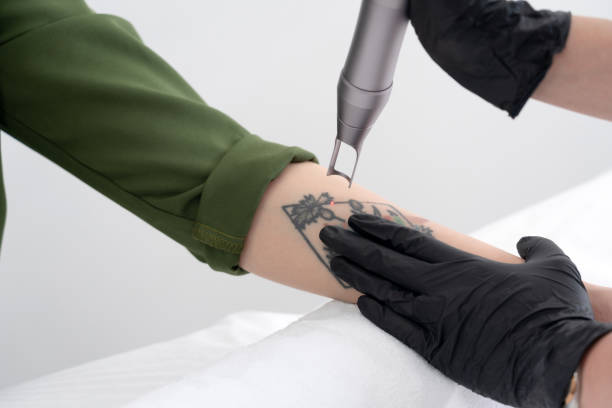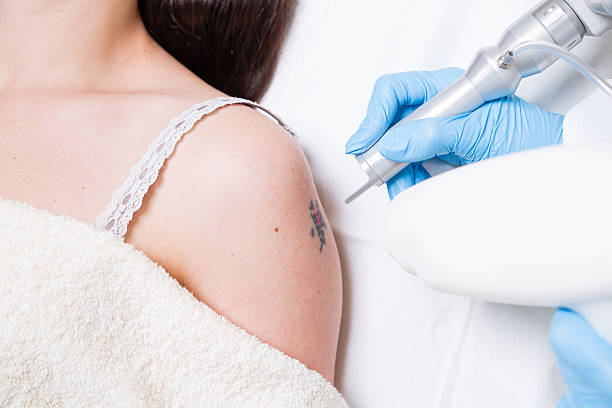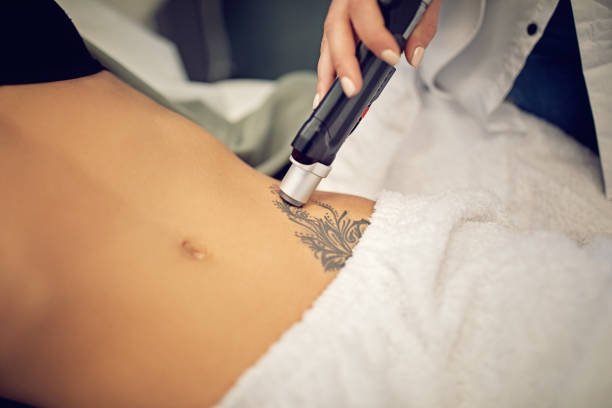Are you regretting that tattoo you got in the heat of the moment? Or has your once-beloved ink simply lost its charm? Don’t worry, because we have the solution for you! Welcome to “The Complete Guide to Tattoo Removal: Your Questions Answered.” In this comprehensive blog post, we will delve into everything you need to know about tattoo removal. From the different methods available to aftercare and recovery tips, we’ve got you covered. So sit back, relax, and get ready to bid farewell to that unwanted ink. Let’s dive right in!
Also Read: Know The Top 6 Fascinating Facts About Tattooing And Tattoo Removal
What to Expect from Laser Tattoo Removal
Laser tattoo removal has become an increasingly popular method for those seeking to erase unwanted tattoos. If you’re considering this procedure, it’s natural to wonder what to expect during the process.
First and foremost, it’s important to understand that laser tattoo removal is a gradual process that requires multiple sessions. Each session targets the pigments in your tattoo using high-intensity laser beams. The lasers break down the ink into smaller particles, allowing your body’s immune system to gradually eliminate them.

During the treatment, you may experience some discomfort or pain. While everyone’s pain tolerance varies, most patients describe the sensation as similar to being snapped with a rubber band or feeling like hot specks on their skin. However, many clinics offer numbing creams or cooling devices that can help minimize any discomfort.
After each session, you can expect some side effects such as redness, swelling, and blistering in the treated area. These are normal and usually subside within a few days. It’s crucial to follow your technician’s aftercare instructions carefully to ensure proper healing and minimize any potential risks of infection or scarring.
It’s essential to have realistic expectations when it comes to laser tattoo removal. Complete removal is not always guaranteed; factors such as tattoo color, size, location on the body, and individual skin type can affect results. Some tattoos may lighten significantly but might not completely disappear.
The Different Types of Tattoo Removal Methods
When it comes to removing tattoos, there are several methods available. One of the most common and effective is laser tattoo removal. This method uses high-powered lasers to break down the ink in the skin so that it can be naturally eliminated by the body’s immune system. Laser tattoo removal is considered safe and has minimal side effects.
Another option for tattoo removal is surgical excision. This involves cutting out the tattooed skin and stitching the surrounding skin back together. While this method can be effective for small tattoos, it may leave a scar depending on the size and location of the tattoo.
There are also various creams and ointments on the market that claim to fade or remove tattoos over time. However, these products are often not as effective as laser or surgical methods and may take longer to see results, if any.
Some people opt for dermabrasion or chemical peels as a way to remove their tattoos. These procedures involve removing layers of skin using abrasive tools or applying chemical solutions to peel away layers of skin, respectively.
It’s important to note that not all tattoo removal methods will work for everyone, and some may be more suitable than others based on factors such as size, color, depth, and location of your tattoo. Consulting with a professional at a reputable tattoo removal clinic like Image Clinic in Kolkata will help you determine which method is best for you.
Which Tattoo Removal Method is Right for Me?
When it comes to removing a tattoo, there are several methods available. Each method has its own pros and cons, so it’s important to consider your individual needs and circumstances when deciding which one is right for you.
One popular option is laser tattoo removal. This method uses high-intensity lasers to break down the ink particles in your skin, allowing your body to gradually eliminate them over time. Laser tattoo removal is effective for most types of tattoos and can be adjusted based on the size, color, and depth of the ink.
Another method is surgical excision. This involves cutting out the tattooed skin and stitching the remaining skin back together. Surgical excision may be more suitable for smaller tattoos or those located in areas where scarring won’t be as noticeable.
For those who prefer non-invasive options, there are also cream-based treatments available. These creams work by fading the tattoo over time but may not completely remove it.
The best tattoo removal method for you depends on factors such as your skin type, budget, pain tolerance, desired results, and any existing medical conditions. Consult with a professional at a reputable tattoo removal clinic like Image Clinic in Kolkata to discuss your options and find out which method they recommend based on their expertise.
Aftercare and Recovery
Taking care of your skin after laser tattoo removal is crucial to ensure proper healing and minimize the risk of complications. Here are some important tips for aftercare and recovery:
- Keep the area clean: Gently wash the treated area with mild soap and water, then pat it dry with a clean towel. Avoid scrubbing or rubbing the area, as this can irritate the skin.
- Apply an ointment or cream: Your tattoo removal specialist may recommend applying a thin layer of antibiotic ointment or moisturizing cream to keep the skin hydrated and promote healing. Follow their instructions carefully.
- Protect from sunlight: The treated area will be more sensitive to sunlight, so it’s important to protect it from UV rays by wearing loose clothing that covers the area or using a broad-spectrum sunscreen with SPF 30 or higher.
- Avoid swimming pools and hot tubs: It’s best to avoid soaking in pools, hot tubs, saunas, or steam rooms until your skin has fully healed. These environments can increase your risk of infection.
- Be patient: Tattoo removal is not an overnight process; it takes time for your body to eliminate ink particles through natural processes like lymphatic drainage. Results may vary depending on various factors such as tattoo size, color, location, and individual response.
Remember that everyone’s experience with tattoo removal is unique – what works for one person may not work for another! If you have any concerns during your recovery period, don’t hesitate to reach out to your tattoo removal clinic for guidance.
Risks and Complications of Tattoo Removal
Risks and complications are an important aspect to consider when it comes to tattoo removal. While laser tattoo removal is generally considered safe, there are some risks involved that you should be aware of.
One common risk is the potential for skin irritation or allergic reactions. Some people may experience redness, swelling, or itching at the treatment site. These symptoms usually subside within a few days, but in rare cases, they can persist or become more severe.

Another possible complication is hyperpigmentation or hypopigmentation. Hyperpigmentation occurs when the treated area becomes darker than the surrounding skin, while hypopigmentation results in lighter patches. These pigment changes are usually temporary but can sometimes be permanent.
Scarring is also a concern with any type of tattoo removal procedure. While laser treatment minimizes this risk compared to other methods like surgical excision, there is still a small chance of scarring. Factors such as your skin type and how well you follow aftercare instructions can influence your likelihood of developing scars.
In some cases, blistering and crusting may occur after laser tattoo removal. This typically resolves on its own within a week or two but could potentially lead to infection if not properly cared for.
It’s worth noting that these risks and complications are relatively rare and most individuals undergo tattoo removal without experiencing any major issues. However, it’s essential to consult with a qualified professional who can assess your specific situation and discuss potential risks before proceeding with any treatment option.
Conclusion
In this comprehensive guide, we have explored everything you need to know about tattoo removal. Whether you are considering laser tattoo removal or other methods, it is important to understand the process, risks, and aftercare involved.
Laser tattoo removal is one of the most effective and popular methods available today. It uses advanced technology to break down the ink pigments in your skin without causing significant damage. However, it may require multiple sessions for complete removal depending on various factors such as size, color, and depth of the tattoo.
It’s important to note that while rare complications like infection or scarring may occur during tattoo removal procedures if not performed correctly or if proper aftercare measures aren’t followed diligently; choosing an experienced practitioner from a reputable clinic significantly minimizes these risks.
If you’re looking for reliable and safe tattoo removal in Kolkata look no further than Image Clinic. With our state-of-the-art laser technology combined with skilled professionals committed to providing excellent care; you can trust us to help you achieve your desired results safely and effectively.


